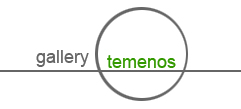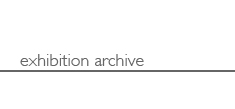Corvus Drawings: 5 Drawings
The mixed media drawings in this series are a tangle of crows, the Iraq war, inadequacies of language and questions around identity and ontology. The drawings address these issues as microcosms of the larger struggle that exists between animals and humans, and the superiority that humans arrogate to themselves. The crows are little more than outlines; in many of the drawings, crows shape-shift into words, ancient texts, letterforms, graffiti and images. Language is both the medium and the message in these drawings, the visual and conceptual backbone, and embodies the capacity to clarify and confound.
In my initial research for Babel, I discovered a cuneiform tablet from Girsu, Iraq, dating from 2400 BCE (now housed in the Louvre in Paris), a letter from a high priest to a king informing the latter of his son’s death in combat. I was immediately struck by the collapse of time and place that occurred with this clay missive: the death of a soldier almost 4500 years ago has the same devastating sting that families in the current Iraq conflict are bearing today. Alexander the Great appears on coins falling like rain from the sky, much like Plutarch’s description of ravens falling dead from the sky as Alexander entered Babylon.
Legion explores identity and ontology from the perspective of the cartoon magpies Heckel and Jeckel (variously spelled Heckle and Jeckle). In this work, the two magpies converse about the nature of crow-ness, the fallibility of the Bush administration (particularly during hurricane Katrina), and the difficulty of realizing a truth of being. As these protagonists observe, their crow-ness is defined by humans who reduce their rich language to an imitative ‘caw.’ Identity in this work—be it human, crow or magpie—is in a state of flux, so that scribble gestures become a gestalt of a large human fingerprint, and human fingerprints flock together to create the form of a large crow.
Ur-text contrasts the word that we designate as a crow’s vocabulary (caw caw) with what humans identify as babble (blah blah). The preponderance of language in this work ironically communicates nothing.
Joint Memories is a double entendre; it refers to the evolution of species—in this case, birds and humans—and the distinction between the furcula (wish bone) and collarbone. It also refers to the joint memories that Iraqis share with (primarily) Americans since the invasion in 2003. The crow in this image is comprised of the pillaged ruins of Tell-Jokha, Iraq, where looters chipped the ancient inscriptions from the façade of the temple. The homonymous tell-joke-ha ironically contrasts the humerus bone in a pun that elicits more sorrow than laughter.
Overdrawn is also a double-entendre, referring to the idea of withdrawing in excess of what can be sustained (namely, blood and oil), as well as the literally overdrawn, horror vacui nature of this drawing. A map of ancient Babylonian ruins appears and disappears across the entire drawing and, as in Ur-Text, words are meaningless blather. Here, they reside in a sea of blood-red hatch marks, cluttering chatter above the death toll of the Iraq war and, for the birds, mosquito-borne West Nile virus. |
Karen Bondarchuk is a visual artist whose work—ranging from sculpture and drawing to video and bookmaking — employs a broad range of materials and processes. Her current sculpture and drawing work, centering on crows and ravens, examines the complex, interwoven relationship between humans and corvids. Her artwork has been exhibited widely in the United States, as well as in Canada, England, India and Italy. Bondarchuk has been the recipient of several fellowships and grants, including residencies at Virginia Center for the Creative Arts in Amherst, VA, Vermont Studio Center in Johnson, VT, Ragdale Foundation in Lake Forest, IL, an Individual Artist Grant from the Arts Council of Greater Kalamazoo and numerous grants from Western Michigan University in Kalamazoo, MI. Her work has won awards in Virginia, Michigan, Illinois and Maryland, and is part of the permanent collection of the National Gallery of Canada and several other public and private collections. Bondarchuk is also the foundation area coordinator and an associate professor in the Frostic School of Art at Western Michigan University in Kalamazoo, MI, where she has taught since 1997. She received her MFA in sculpture from Ohio State University in Columbus, Ohio, and her BFA in sculpture and video from the Nova Scotia College of Art and Design (NSCAD University) in Halifax, Nova Scotia, Canada.
www.karenbondarchuk.com |





